Australian Tropical Rainforest Plants - Online edition
Garcinia jensenii W.E.Cooper
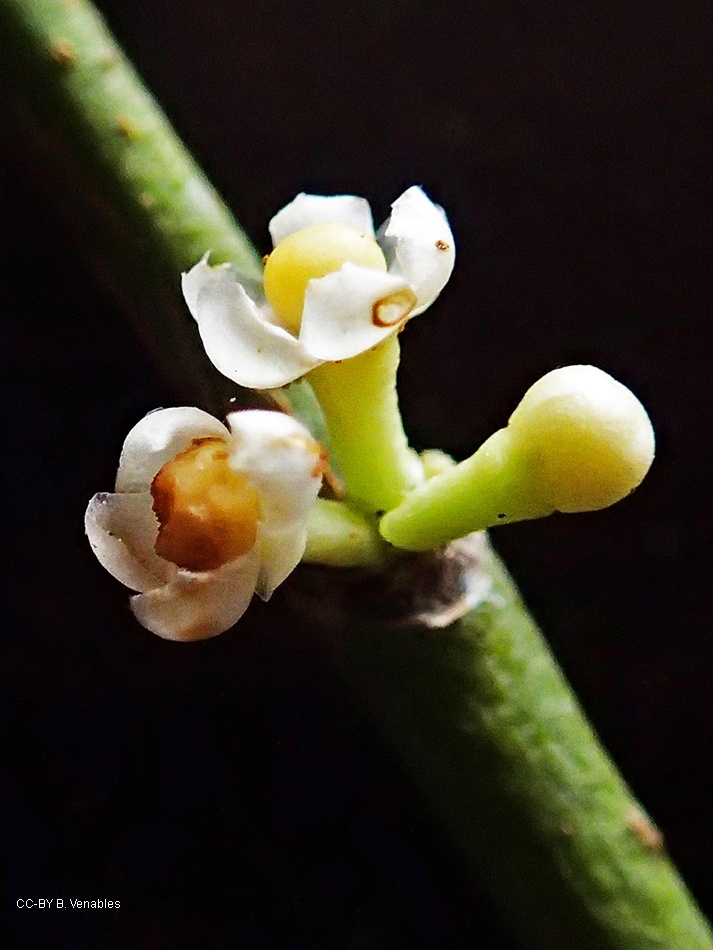
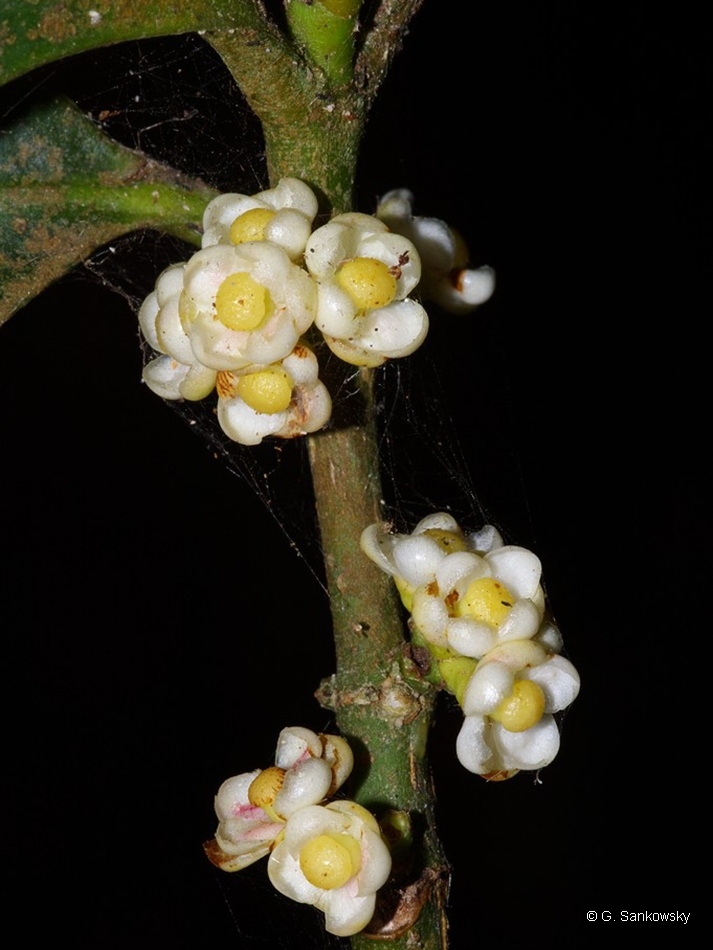
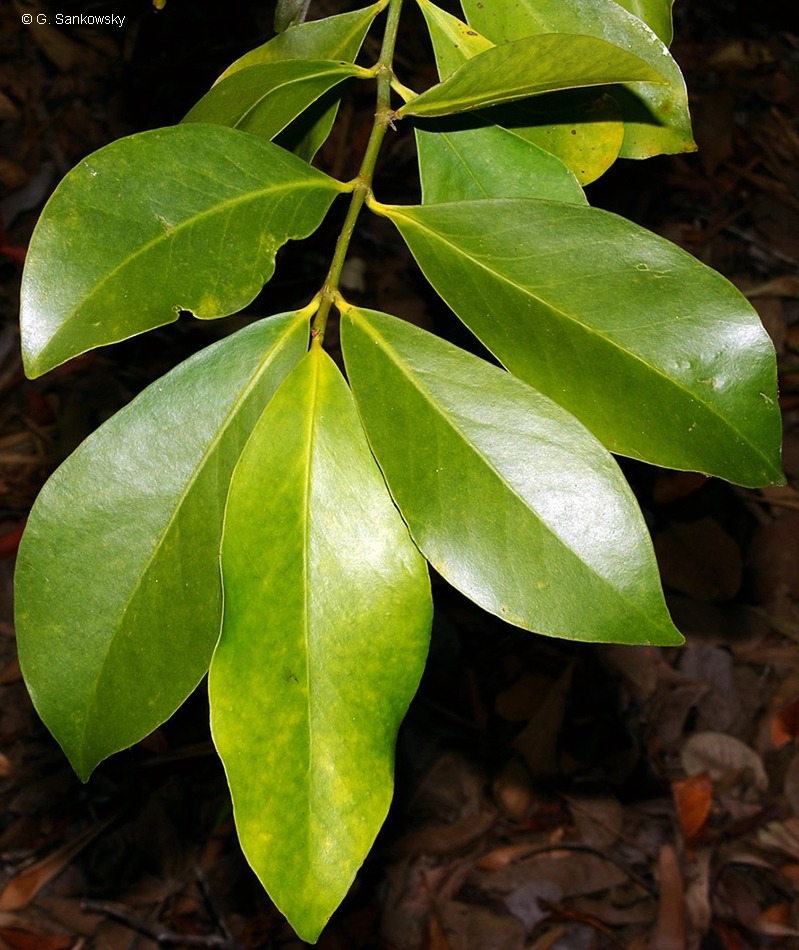
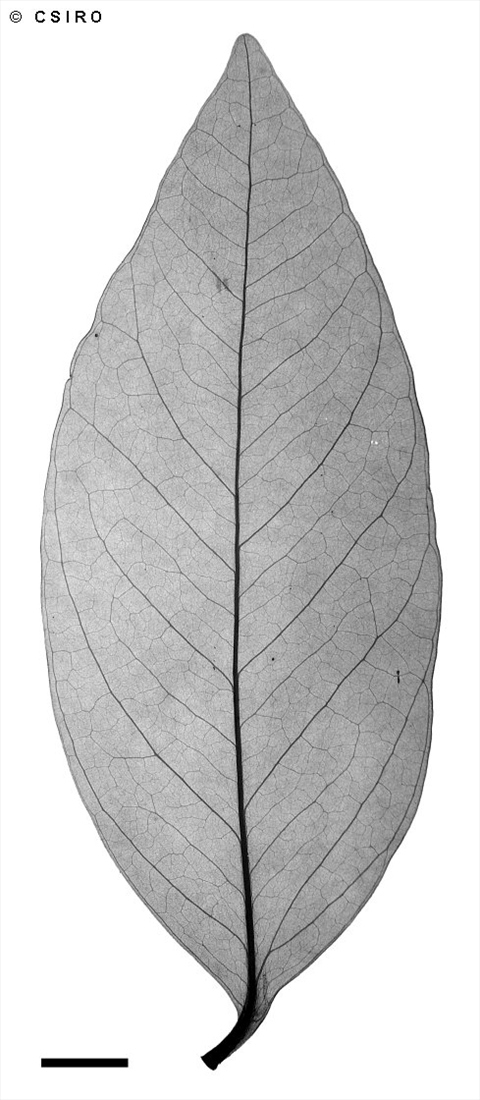

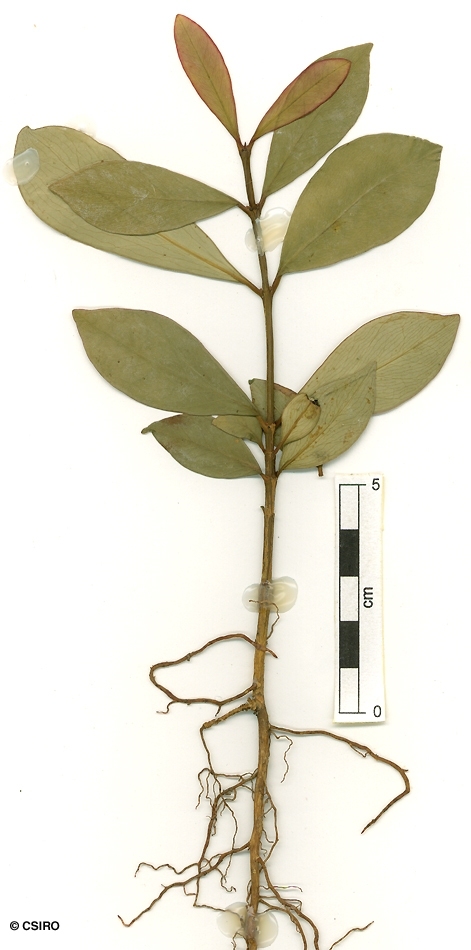
Cooper, W.E. (2013) Austrobaileya 9(1): 10-12. Type: Australia: Queensland, Cook District: about 3 km N of 3-ways, Iron Range National Park, 29 July 2013, W.Cooper 2225, C.Zdenek, B.Venables & J.Pritchard (holo: CNS [2 sheets + spirit]; iso: A, BRI, CANB, FRI, K, KEP, KL, MEL, MO, NSW, NY, SING, US).
Petioles and twigs produce clear exudate. Petioles 5-7 mm. Leaf blades 5.2-16 cm long x 2.0-7.2 cm wide; narrowly to broadly elliptic, ovate-elliptic or obovate. Secondary veins 7-10 pairs. Latex canals on the underside of the leaf blade resemble veins but run at such an angle as to be incompatible with the normal veins.
Male inflorescence axillary, a fascicle or raceme, 5-many-flowered. Male flowers: 7-8 mm diam., pedicels 4.5-12 mm long; sepals 4, 2-whorled, outer pair joined, D-shaped, 1.6 mm long x 1.8 mm wide; inner pair free, petal-like, ca. 4 mm long x 3 mm wide; petals 4, free, imbricate, ca. 4 mm long x 3-4 mm wide; androecium 4-phalangiate, phalanges 3.2 mm long x 2-3 mm wide, apex divided into 2-7 short filaments; anthers 15-30 per phalange. Female inflorescence: terminal or axillary, supra-axillary or ramiflorous, a solitary flower, fascicle or condensed raceme, 3-9-flowered. Female flowers: 4.5-6.5 mm diam.; pedicels 3.5-4.5 mm long; sepals 4, 2-whorled, D-shaped; outer pair joined, ca. 1 mm long x 2 mm wide; inner pair free, 1.2-2 mm long x 2-3 mm wide; petals 4, free, 2 mm long x 2-3 mm wide; gynoecium fungiform, unlobed; stigma disklike, entire, 2.5 mm diam.
Occurs in CYP, known from the Torres Strait islands to the McIlwraith Range. Altitudinal range small, from sea level to about 500 m. Grows as an understorey tree in well developed rain forest or gallery forest on river banks.
Garcinia sp. Claudie River (L.J.Brass 19658), Synonym in part (see also Garcinia leggeae) [Provisional Phrase Name].





